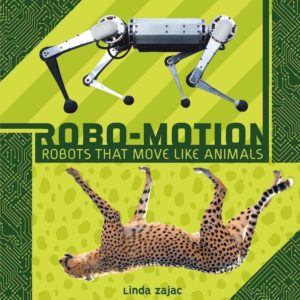“Spread Hope and Optimism with STEM Picture Books”
Last year was a challenging year for children. The pandemic disrupted familiar routines associated with school, play, and family life. Kids were thrust into a world with masks, Zoom, and isolation that have taken a toll on their social, emotional, and academic well-being. While news outlets reported grim statistics, students struggled to focus. For some families, basic needs like food and shelter were challenges. Mental-health related visits to pediatric emergency departments increased 24 percent for children aged 5–11 from mid-March 2020 to October 2020.
When the situation seems insurmountable, it’s hope and optimism that help us deal with the stress. Researchers from the University of Minnesota and the National and Kapodistrian University of Athens, Greece studied the qualities that make kids resilient to disasters like pandemics. They wrote that hope and optimism in families, schools, and communities contribute to resiliency.
In these extraordinary times, hope and optimism can brighten a world that seems dark. They can temper feelings of anger, worry, loneliness, anxiety, and despair. Hope and optimism in STEM books can educate, illuminate, and inspire while shining a light on science.
In STEM books, hope is a promising discovery, a new method, a novel solution, or an advancement in technology that benefits society. In addition to educating readers, STEM books with visions of a better tomorrow inspire them. In a time of rising seas, raging covid variants, and racist tensions, hopeful books can help a child cope and inspire them to action.
They are many benefits in giving kids hope. Hopeful children have better health and less anxiety. Studies show hope improves academic and athletic performance. It builds resilience and lessens stress in challenging times. Hope can motivate a child to take action towards a long-term goal.
In my book, Robo-Motion: Robots That Move Like Animals, (Millbrook, 9/7/2021) the design team at Millbrook Press took my words and made them richer by surrounding them with color, intrigue, and hope. On each spread, in strikingly similar poses, animals are paired with the robots that mimic their motion,. Robo-Motion, a book about biomimicry, has action verbs on every page. Like animals in the wild, robots in the lab skitter, scuttle, grip, and glide. If we could move like animals, we could jump without getting tired, squeeze into tight spaces, and climb up glass. By building robots that mimic animal motion, we can move like them. Robo-Motion is a hopeful book about how robots can benefit society. A portion of the proceeds will be donated to charity.
With the following exercises, you can use Robo-Motion to boost hope and optimism in your classroom:
EXERCISE 1 – Gratitude
Ask children to pick the robot they are most thankful for. Have them write down the robot name and why they picked it.
EXERCISE 2 – Boost optimism
Have children close their eyes and spend some time thinking about the robot they picked. Ask them to imagine a scene where the robot is doing its job. The robot could be saving a life, cutting costs, gathering information, or making work more efficient. Have them imagine that everything works out for the best.
EXERCISE 3 – Writing skills
Ask children to write an optimistic story about the robot they picked and how it helped society.
EXERCISE 4 – Spread optimism
Ask children to share their optimistic stories with the class.
You can also bring hope and optimism into your classroom with these recent STEM nonfiction picture books:
- Crossings by Katy Duffield (Beach Lane, 2020) is a unique STEM book about structures built to protect wildlife from traffic. Although the vehicles that make crossings dangerous for animals are never mentioned in the main text, they appear in nearly all the illustrations. The book takes a fascinating look at manmade structures created to help various animals avoid traffic in the United States and abroad. The common thread is the desire to help wildlife and the hope that they will survive and flourish.
- The Brilliant Deep by Kate Messner (Chronicle, 2018) is another book with a hopeful message. First, readers meet Ken Nedimyer, a diver. Then, in a wordless full-page spread, readers see the effect of one hotter-than-normal summer—bleached coral. Nedimyer and the Coral Restoration Foundation are farming corals and transplanting them to restore reefs. They’ve planted thousands of coral stalks off the Florida Keys and they’re working with other countries to help their threatened reefs. The book gives readers hope something can be done to regenerate corals damaged by warming ocean waters from climate change.
- Mario and the Hole in the Sky by Elizabeth Rusch (Charlesbridge, 2019) is a story about Mario Molina discovering and helping to solve a global problem. In the 1980s, scientists discovered a huge hole in the ozone layer over Antarctica. When countries came together and agreed to stop making the CFC’s that were in everything from aerosols to air conditioners, the ozone layer began to recover. By comparing the ozone problem with climate change, readers see that by working together countries can solve global problems. We’ve done it before, we can do it again.
- A leaking oil pipeline can wreak havoc on the environment. In We Are Water Protectors by Carole Lindstrom (Roaring Brook, 2020), the Ojibwe tribe fights to protect the ecosystem. A black snake symbolizes the oil pipeline that’s never mentioned in the text. The last page gives readers the opportunity to sign a pledge to protect the Earth. With gorgeous illustrations, this book is a rallying cry to action. It leaves the reader feeling hopeful that the tribe, along with others, will not give up their fight to protect water, land, plants, and animals.
STEM books with hope and optimism have power. They can broaden a child’s horizons, expand a child’s mind, and brighten a child’s world. In Emily Dickinson’s poetry collection, hope is the thing with feathers. In a post-pandemic classroom, hope is the thing with pages.
Resources:
- Bailis, Daniel S., and Judith G. Chipperfield. “Hope and optimism.” (2012): 342-349.
- Braun-Lewensohn, Orna, Sarah Abu-Kaf, and Tehila Kalagy. “Hope and resilience during a pandemic among three cultural groups in Israel: the second wave of Covid-19.” Frontiers in Psychology 12 (2021): 340.
- CDC, “Morbidity and Mortality Weekly Report,” November 13, 2020. https://www.cdc.gov/mmwr/volumes/69/wr/mm6945a3.htm#:~:text=Beginning%20in%20April%202020%2C%20the,17%20years%20increased%20approximately%2024%25
- The University of Kansas Healthy System. https://www.kansashealthsystem.com/health-resources/turning-point/programs/resilience-toolbox/hope-and-optimism/why-do-we-need-hope
- Masten, Ann S., and Frosso Motti-Stefanidi. “Multisystem resilience for children and youth in disaster: Reflections in the context of COVID-19.” Adversity and resilience science 1.2 (2020): 95-106.
- Psychology Today. https://www.psychologytoday.com/us/blog/the-science-behind-behavior/201702/whats-the-difference-between-optimism-and-hope
Published September 7th, 2021 by Millbrook Press
About the Book: Like animals in the wild, robots in the lab skitter, scuttle, grip, and glide. In this STEAM title about biomimicry, crisp color photographs of animals are paired with the robots that mimic their motion. Action verbs and literary devices introduce each animal on the left, while details about each robot and its purpose grace the opposite page. This nonfiction picture book is a hopeful look at how robots can benefit society. Back matter includes a glossary and information about biomimicry. The book will appeal to young readers interested in animals, engineering, technology, and science. A portion of the proceeds will be donated to charity.
About the Author: Linda Zajac is an award-winning science writer. She’s a former computer programmer, systems analyst, and consultant who would have jumped at the chance to program a robot. Linda writes about cutting-edge science, technology, and biotechnology and how they’re used to save wildlife, advance medicine, and protect the environment. Linda is a Tassy Walden winner and a recipient of the PEN New England Susan P. Bloom Children’s Book Discovery Award. Her published works include six Minecraft books for kids along with many magazine articles in Highlights, MUSE, ChemMatters, and more. Robo-Motion: Robots That Move like Animals was published September 7, 2021 by Millbrook Press.
Thank you, Linda, for this post focusing on the social and emotional learning our students need to do in addition to academic and a way to combine the two!



You’re welcome. Thanks for hosting me! I hope it helps the kids in more ways than one.